Read Part 1 of this article. April’s maintenance article is the second part to last month’s “Killing the Creak” article, in which I outlined five areas of your bicycle that should be investigated if you are experiencing creaking and/or squeaking emanating from your bike. This month I will address another five areas that could be the potential source of your noise problem.
Stem & Handlebars
A loose stem or handlebar bolt may be the cause of a creaking sound. If the threads of the fastening bolts are dry they may not secure properly. Remove all faceplate and steering tube clamp bolts, grease the threads and the underside of the bolt head, and reinstall with the proper amount of torque. The contact points between handlebar and stem should NOT be greased or lubricated with any material. Carbon bar and stem combinations use a special paste at the contact points to prevent slippage. Many solvents and greases will erode the clear coat finish on carbon handlebars and lead to premature failure.
Saddle & Seat Post
The saddle may also be loose on the seat post, causing a creak as the rails underneath the saddle move. Check the tightness of the binding bolt(s) underneath the saddle. Spray a light oil on the saddle and rail contact points. The seat post can move slightly in the frame seat tube, especially if the fit inside the frame is not precise. Knurling the post, or even cutting off excess post may help. Lightly grease the seat post and ensure it is inserted into the seat tube at or above the minimum insert line. Use carbon paste on carbon seat posts.
Bottom Bracket
If creaking is coming from your crankset it could be because the bottom bracket is not properly secured into the frame. Most bike frames use a threaded bottom bracket shell. If the bearing cups or retaining lockring are not tight, there may be movement between the internal and external threads. If your bicycle has an adjustable type bottom bracket you should remove, clean, grease threads on bottom bracket shell and inside frame, and reinstall with the proper amount of torque. If your bicycle has a cartridge type bottom bracket you should follow the same procedure in addition to checking the lockring for security and replacing it if necessary.
Rear Derailleur Wheels
The two pulley wheels, sometimes called idler or jockey wheels, of the rear derailleur should spin freely and noiselessly as the chain turns. Use a light lubricant to quiet and squeaks coming from them. Replace if necessary.
Cable Housing End Caps
If there seems to be a creaking when the handlebars are turned, inspect the cable housing, especially the end caps, where the cables enter the frame. These end caps are often metal, and may creak as they move against the frame. Placing a small drop of lubricant at this contact point is a temporary fix. It is advisable to change metal end caps for plastic and ensure that the contact point remains free of rust.
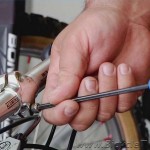
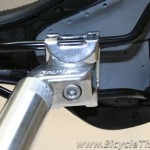
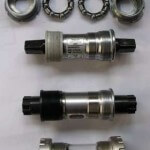
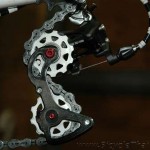
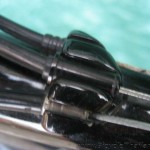
Leave a Reply